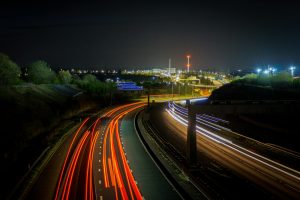Differences Between Urban and Rural Autonomous Car Performance
As autonomous car technology continues to advance, one of the major concerns is how these vehicles will perform in different environments. Urban and rural areas have very distinct driving conditions, so it’s important to understand the differences in performance for autonomous cars in these settings. In this article, we will explore the variances in autonomous car performance between urban and rural environments and how they may impact the future of transportation.
Urban Performance
Urban environments are bustling with traffic, pedestrians, and countless distractions. This poses a unique set of challenges for autonomous cars. One of the main focuses for urban autonomous car performance is navigating tight spaces and constant changes in direction. Urban areas tend to have more intricate road layouts, with complex intersections, one-way streets, and roundabouts.
This means that autonomous cars in urban environments must have sophisticated sensors and algorithms to accurately interpret and follow traffic signals, signs, and lane markings. They must also be able to anticipate potential hazards and obstacles, such as pedestrians, cyclists, and other road users.
Challenges
The most significant challenge for autonomous cars in urban areas is dealing with heavy traffic. As more and more vehicles switch to autonomous technology, the roads are likely to become even more congested. This could lead to longer commute times and slower overall performance for autonomous cars.
Additionally, parking in urban areas can be a daunting task for any driver, let alone an autonomous car. These vehicles must be able to navigate tight parking spaces and accurately park in a variety of situations, such as parallel parking and tight parking garages.
Advancements
Despite these challenges, many companies are making great strides in developing autonomous cars for urban environments. For example, Waymo, a leading company in autonomous technology, has been testing their vehicles in various cities, including San Francisco, where they must navigate steep hills and tight streets.
Another area of advancement is in ride-sharing services. Many companies are exploring the potential for autonomous cars to operate as part of a ride-sharing network in urban areas. This would allow for more efficient and convenient transportation options for city dwellers while reducing the number of cars on the road.
Rural Performance
Unlike urban areas, rural environments have a lower volume of traffic and fewer pedestrians. This may seem like an ideal setting for autonomous cars, but it still presents unique challenges for these vehicles.
Rural roads tend to be wider and have higher speed limits, which means autonomous cars must be able to adapt to different driving situations. They must also be able to navigate more unpredictable road conditions, such as dirt roads and gravel paths, which may not have clear lane markings or signage.
Challenges
One of the most significant challenges for autonomous cars in rural areas is the lack of infrastructure. While urban environments have well-maintained roads and traffic signals, rural areas may not have the same level of infrastructure. This could make it more challenging for autonomous cars to accurately interpret and follow road signs and signals.
Another challenge is the variability of rural roads. They may have steep inclines, sharp curves, and narrow bridges that require advanced sensors and algorithms to navigate safely. These vehicles must also be able to handle unexpected obstacles, such as wildlife and farm animals on the road.
Advancements
Despite these challenges, there have been significant advancements in autonomous car technology for rural areas. Some companies, such as Kodiak Robotics, are developing self-driving trucks specifically designed for long-haul routes, such as those found in rural areas. These vehicles use advanced sensors and mapping technology to navigate the open roads safely.
In addition, many companies are working on improving the accuracy of their sensors and algorithms to better adapt to changing road conditions and obstacles. This will be crucial for the success of autonomous cars in rural areas.
Conclusion
While there are many differences between urban and rural autonomous car performance, both settings present their own unique challenges and opportunities. As technology continues to advance, we can expect to see even more improvements in autonomous car performance in both settings. Ultimately, the goal is to create a comprehensive system that can safely and efficiently operate in any environment, whether it’s a busy city street or a quiet country road.










